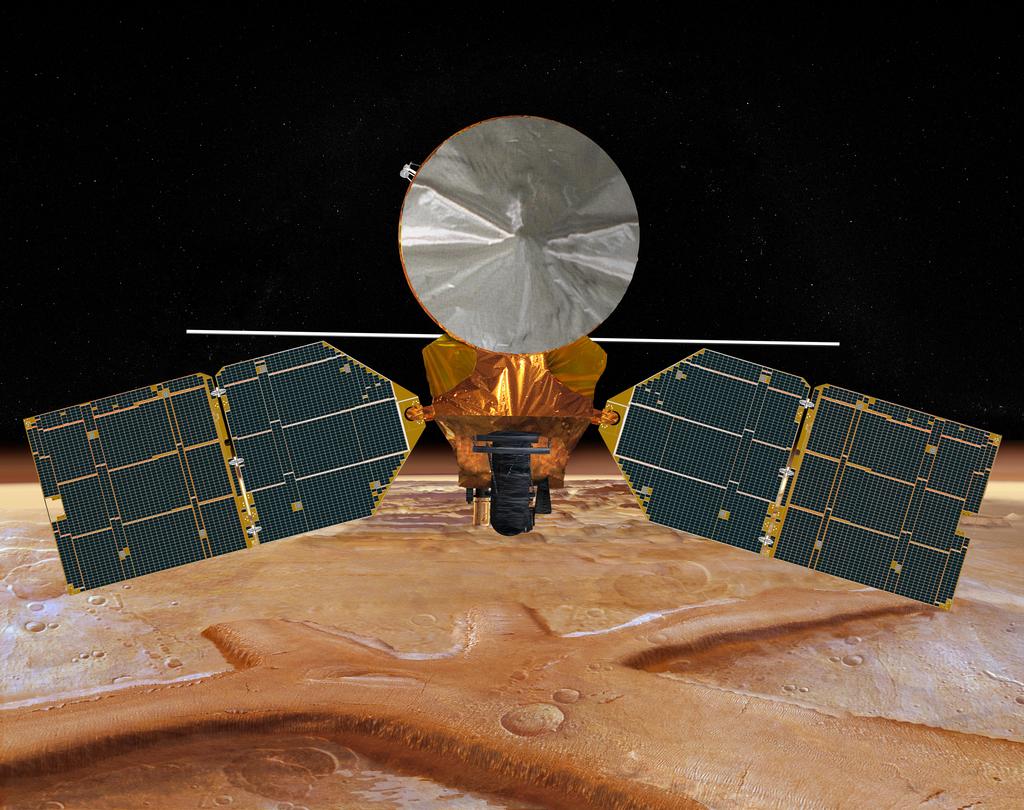Antennas
High-gain Antenna
The high-gain antenna is a 3 meter- (10 foot-) diameter dish antenna for sending and receiving data at high rates.The high-gain antenna was deployed shortly after launch (see
launch configuration), and will remain deployed for the remainder of the mission. It serves as the primary means of communication to and from the orbiter.The high-gain antenna must be pointed accurately and is therefore steered using the
gimbal mechanism.
Low-gain Antennas
Two smaller antennas provide lower-rate communication during emergencies and special events. For example, they did this during launch and Mars Orbit Insertion. The data rate of these antennas is lower because they focus the radio beam much more broadly than the high-gain antenna, meaning less of the signal reaches Earth. The Deep Space Network on Earth, however, can "see" the signal even when the spacecraft is not pointed at Earth. That is why these antennas are useful for emergencies. Think of how a flashlight works: With a tightly focused beam of light you can see farther directly ahead but not at all to the side. With a wide beam you can see all around you but not very far. The low-gain antennas have the capability to both transmit and receive.The two low-gain antennas are mounted on the high-gain antenna dish -- one on the front side and one on the back -- and move with it, though as mentioned they do not require accurate pointing. Two are needed to enable communication at all times, regardless of the position of the spacecraft.
Amplifiers
Located on the back side of the high-gain antenna is the enclosure for the Traveling Wave Tube Amplifiers, which boost the power of the spacecraft's radio signals so they are strong enough to be detected by the
Deep Space Network antennas. Mars Reconnaissance Orbiter has three amplifiers on board:
- two for the X-band radio frequency that transmit radio signals at a power of 100 watts (the second one is a backup to provide communications if the first one fails)
- one for the Ka-band radio frequency that is capable of transmitting at 35 watts.
Transponders
Mars Reconnaissance Orbiter carries two transponders, special radio receiver/transmitters designed for long-range space communications. The second transponder is a backup just in case the first one fails.
The transponders have several functions:
| transmit/receive function: |
translates digital electrical signals (ones and zeros used by the computer) into radio signals for sending data to Earth, and translates radio signals to digital electrical signals for receiving commands from Earth |
| transponding function: |
listens for and detects a signal coming in from Earth, to which it automatically responds |
| navigation function: |
transmits several types of signals that provide critical navigation clues, enabling navigators on the ground to make precise calculations of the spacecraft speed and distance from Earth |
